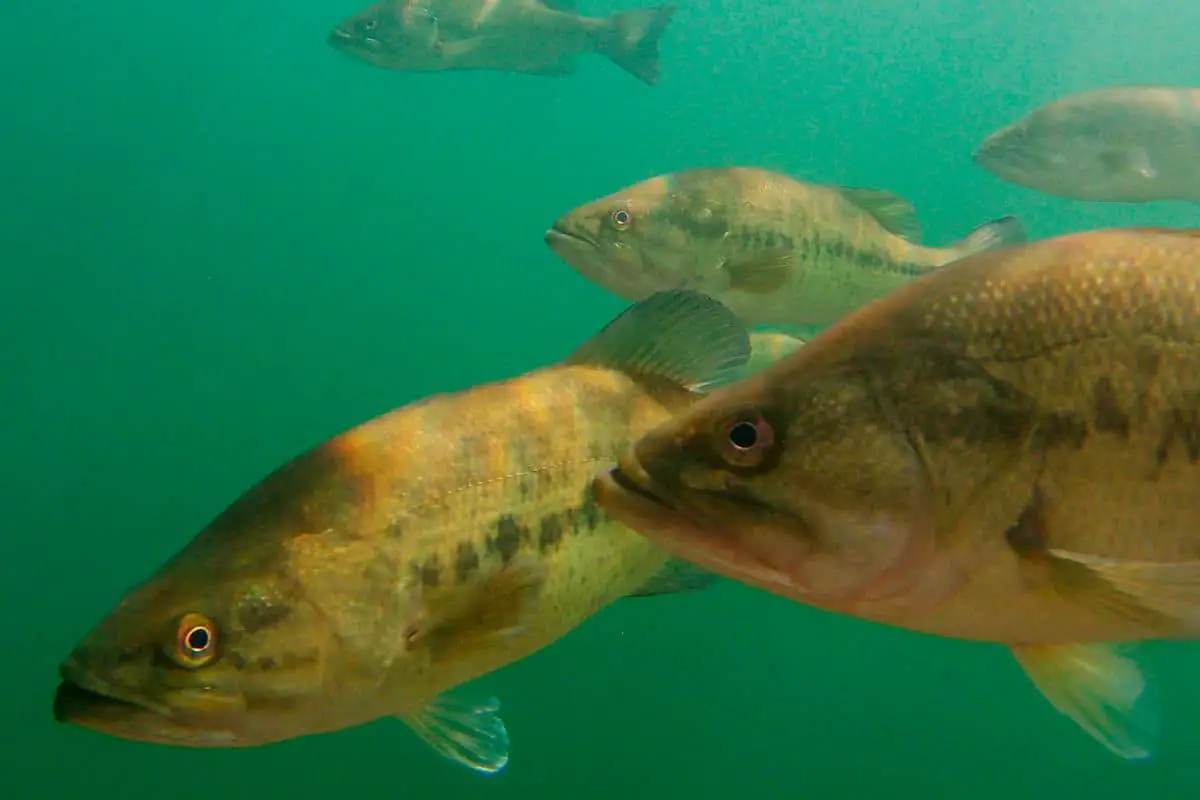It is not a surprise that bass can be found both shallow and deep. The real key to locating and catching them is to understand why our favorite gamefish like various depths at any given time.
Intense sunshine and clear water with good oxygen will pull bass deep. When water is dirty and low in oxygen bass can be found in the shallows. Current and low light situations will also pull bass to the top of the water column in lakes and rivers.
Let’s break down the factors that determine when and where you will find bass in the shallows or deep water. We do need to keep in mind that “deep” water is relative to the types of places you fish. Deep in Florida may be twelve feet, whereas Table Rock may be fifty feet. Either way, the following concepts, and conditions apply.
Oxygen Levels and Where Bass Will Be in the Water Column
Fish of all species need oxygen levels that are somewhere between 5-13 parts per million (ppm.) Anything less than 5 ppm and they will steer clear of it.
Several factors will contribute to oxygen level fluctuation and where the bass will position.
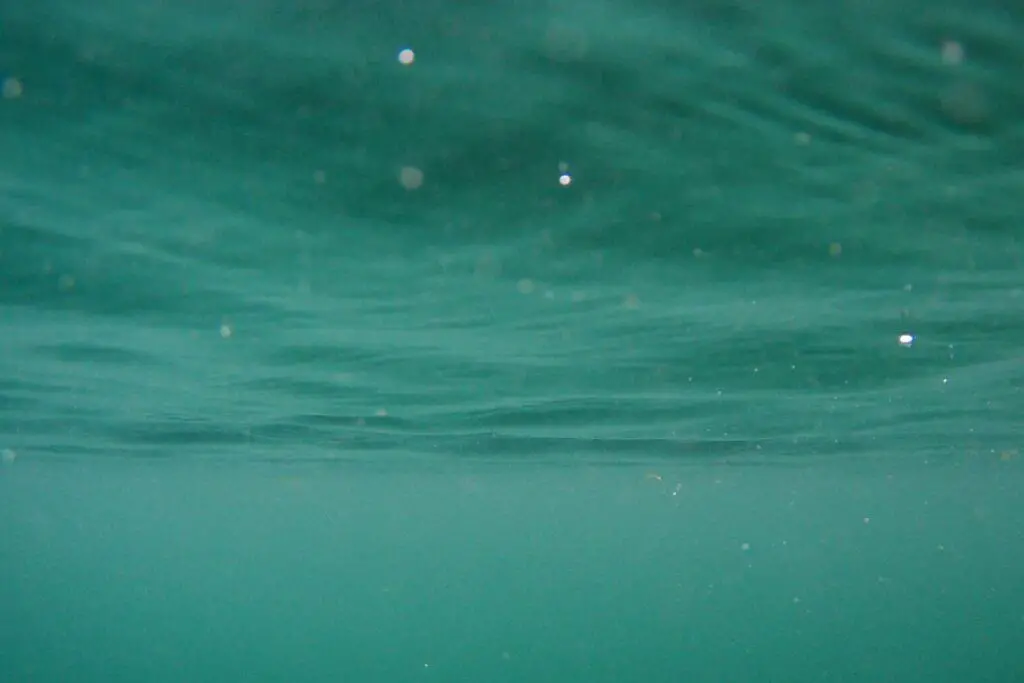
Current and Oxygen Levels for Bass
If water has current, whether natural, wind-driven, or from boat traffic, it will oxygenate the water and the bass will be pulled to it. In most situations, the current will push the bass shallow.
River systems are a perfect example of this. Bass can be found less than 10 ft deep about any time of year and in most weather conditions. There also will be a considerable population of bass that will be in water much shallower than that.
Another type of current is runoff from heavy rains. I have seen feeder creeks, drainages, and other tributaries congregate bass and trigger them to feed. The fresh flowing water not only creates an oxygen-rich environment but also activates the food chain.
(Here is an article on 8 Tips for Catching Bass From Deep Water.)
Vegetation and Water Clarity and How They Impact Oxygen Levels
When aquatic vegetation is healthy and plentiful it provides excellent oxygen levels for bass. This vegetation will grow where there is plenty of light.
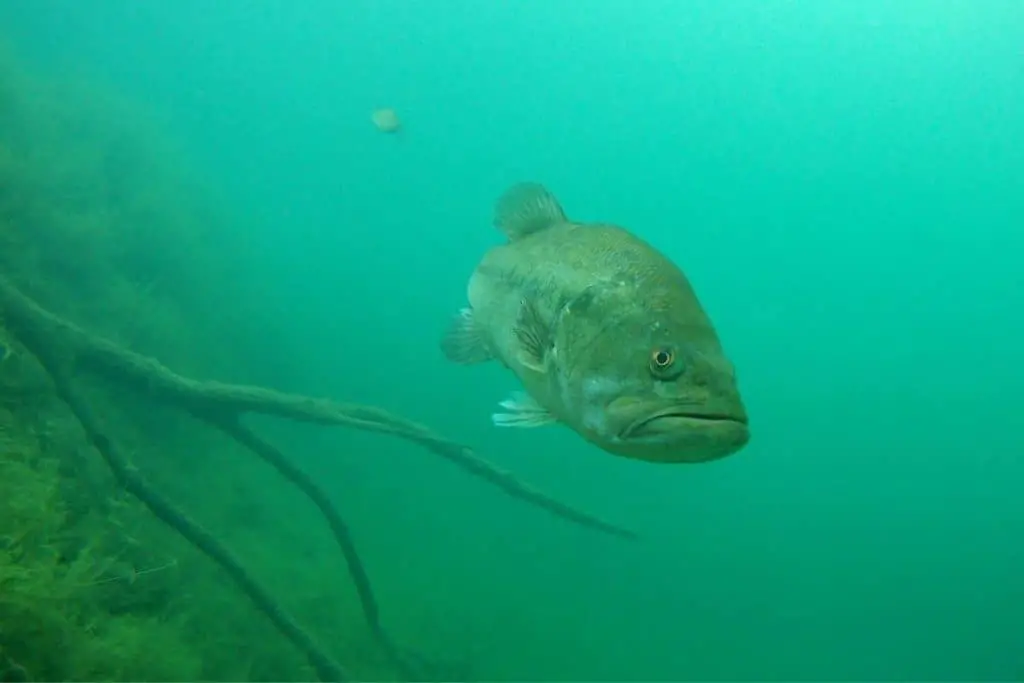
In clear water, it is common for thick stands of aquatic plants to be found in 20 feet of water or more. As long as there are plants, the bass can find comfortable oxygen levels. This will pull bass much deeper than in a lake or river that has dirty water and no plant life.
Heavily stained water and dirty water drives bass shallow. These gamefish are sight-oriented predators and lack of water clarity will keep them shallower than their clear water counterparts.
The dirty water will also push them toward hard surfaces and structure. It is very similar to how we behave when the power goes out and suddenly a room is dark. We naturally will extend a hand to feel for walls and hard objects to guide us.
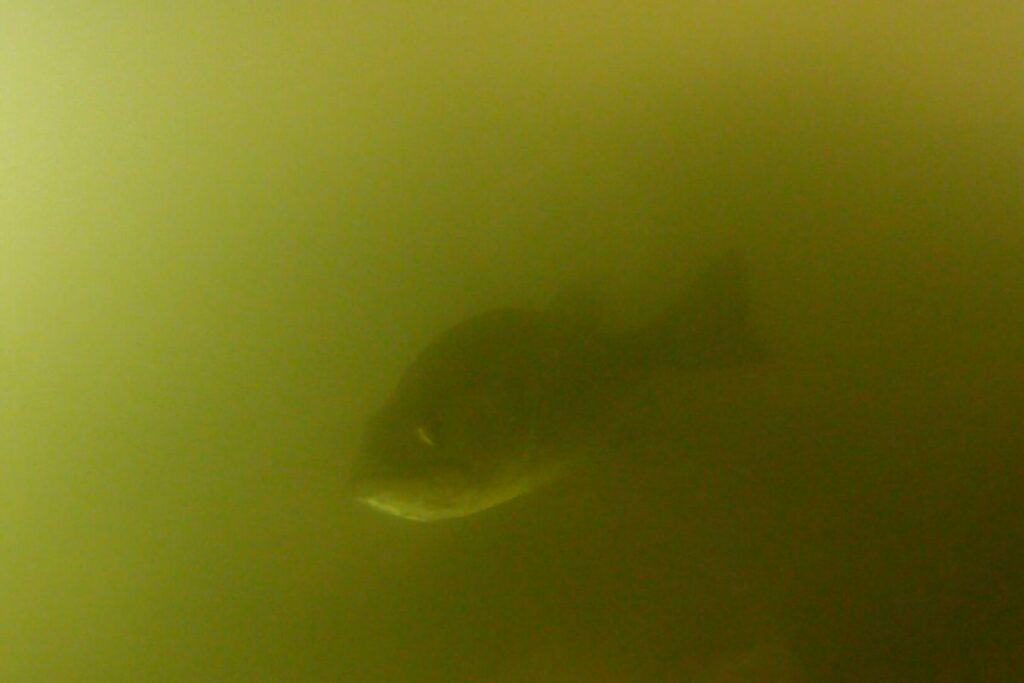
Bass act in much the same manner.
In these dirty water situations, you can expect to find bass very shallow. Even in the coldest parts of the year.
Algae Blooms and How it Positions Bass
When a body of water has an algae bloom it depletes the water of oxygen due to its thick surface coverage. This blocks the sunlight for aquatic plants lower in the water column.
When I fished waters with significant algae blooms I found the bass positioned very shallow. In fact, on one recent trip to a lake in Wisconsin every bass we caught was in less than a foot of water. The algae looked like bright green Kool-Aid and covered nearly the entire lake.
Light Penetration and How it Positions Bass
Assuming that oxygen levels are good throughout most of the water column, light penetration is another critical factor that cannot be ignored.
Bass lack eyelids and the bright sunshine can be irritating to them. The intense light will push them to shady areas. One way they can find this shade is by ducking underneath overhead cover like docks, brush, and emergent vegetation.
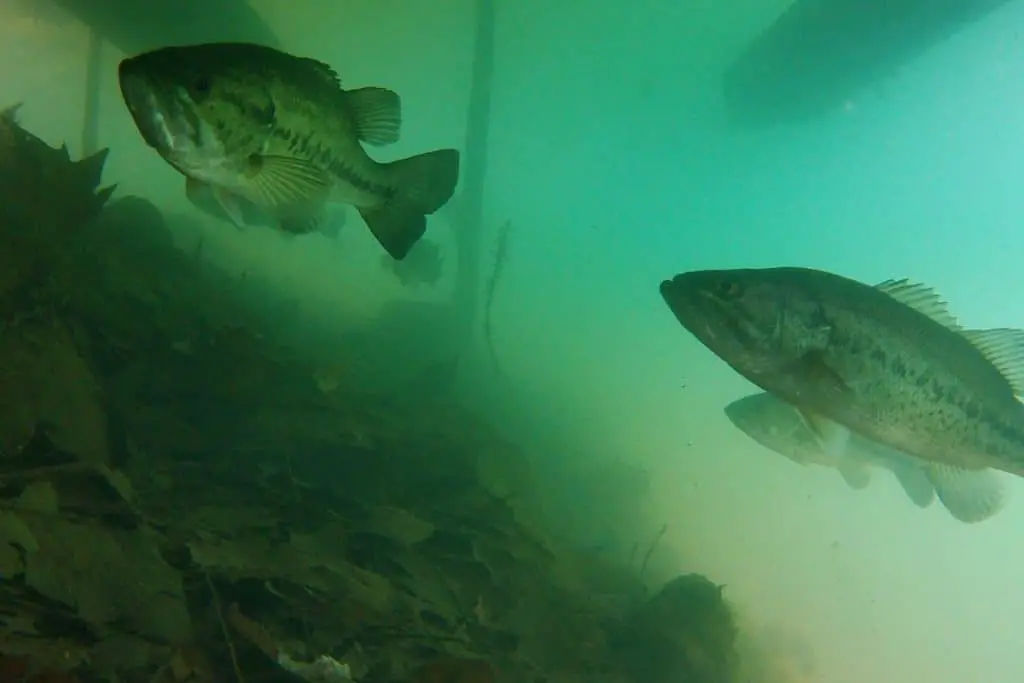
The other option for them in clear water is to go deep and find areas where the light penetration lessens.
The more complex the cover and vast the more likely there will be bass shallow. A huge system of docks is almost always guaranteed to have bass somewhere on it. They can move and keep positioning in shady areas as the sun moves overhead.
Thick stands of emergent vegetation, like lily pads, hyacinth mats, and duckweed will also pull bass shallow. Good populations of fish can be found under emergent vegetation even during the hottest days of summer. The oxygen levels are good and the shade produces noticeably cooler water.
For lakes that are clearer and lack adequate overhead cover, the bass will use depth to their advantage when looking for water that is more comfortable in temperature.
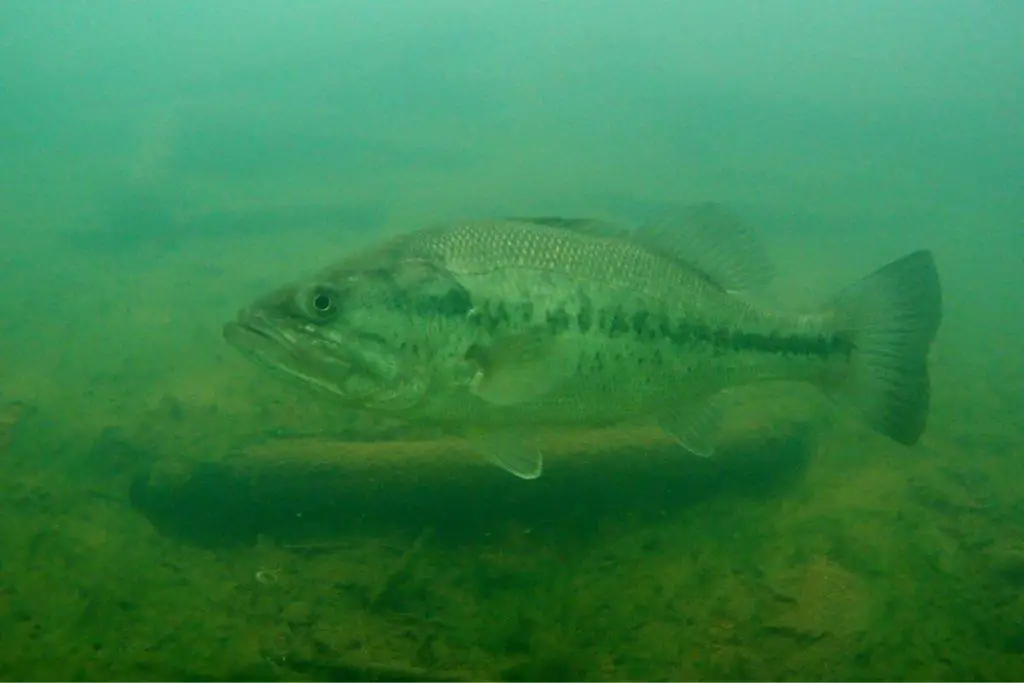
At times, this can drive them very deep.
The deepest bass I have caught was a largemouth bass on Norfork Lake in Arkansas. I pulled that fish up with a jigging spoon from eighty feet of water. While this is an extreme example, it demonstrates that bass are not afraid to hit the depths when the oxygen levels are favorable.
Seasonal Patterns and How Deep Bass Will Get
The spring is the best time to catch big bass shallow because of the spawning cycle. The fish are looking for areas that have adequate warmth to hatch their eggs.
For many locations, this means that the north bank will see more spawning action than other parts of the lake. It gets the most direct sunlight in the spring and the water warms the fastest.
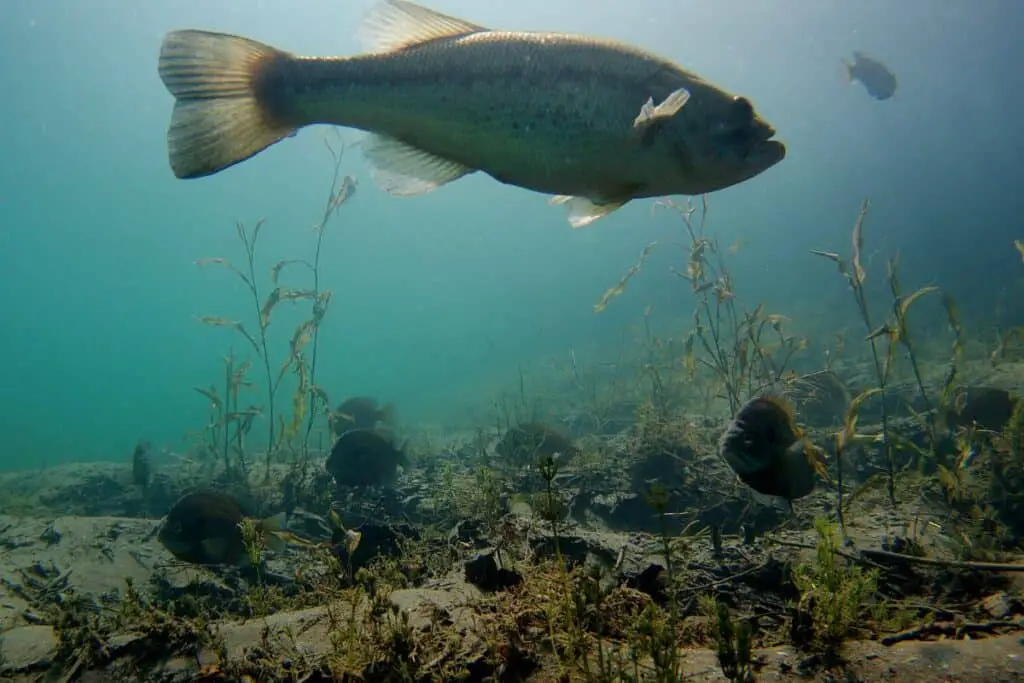
While both pre and post-spawn bass will be deeper than bass sitting on beds, the migration from deeper to shallow water will be continuous for about a month.
Bass will also make a move to the shallows in the fall. This is especially noticeable in the northern parts of the country where the water cools the fastest.
The bass will gorge themselves on baitfish in preparation for the upcoming cold weather. This is a perfect time to find bass extremely shallow and aggressive.
Easy Way to Find the Depth Bass are Using
When I am not sure where to start fishing, I look for life. Specifically prey species such as shad or panfish.
If I am checking shallow water and not seeing any signs of life, then it is clear I need to be looking deeper. This is when electronics can help. Look for balls of bait or schools of panfish and take note of the depth they are holding. Anyplace you can find structure that intersects with a school of bait is a good location to start fishing for bass.
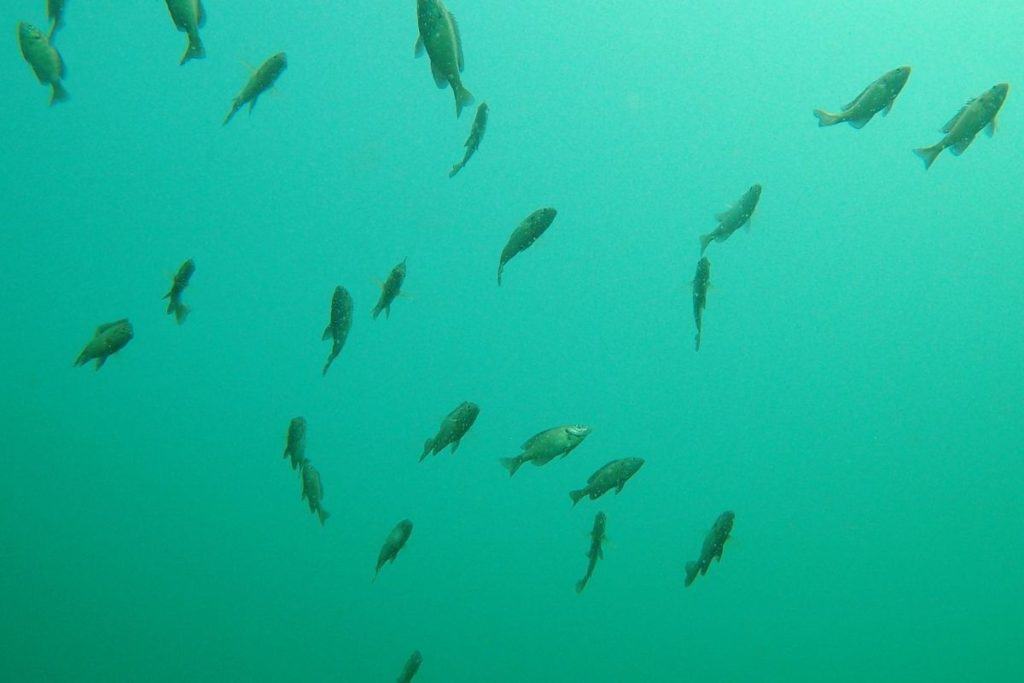
Another key indicator is to look for shorebirds. When there are egrets and herons nearby you know that there is life in the area. These skilled predators will be in places where they can easily grab any small fish with their bills. If there is enough shallow prey in the area to attract the birds, then the bass will be nearby as well.
Good luck out there and make sure to encourage someone today. You never know how you may change their life forever.
Isaiah 6:8

